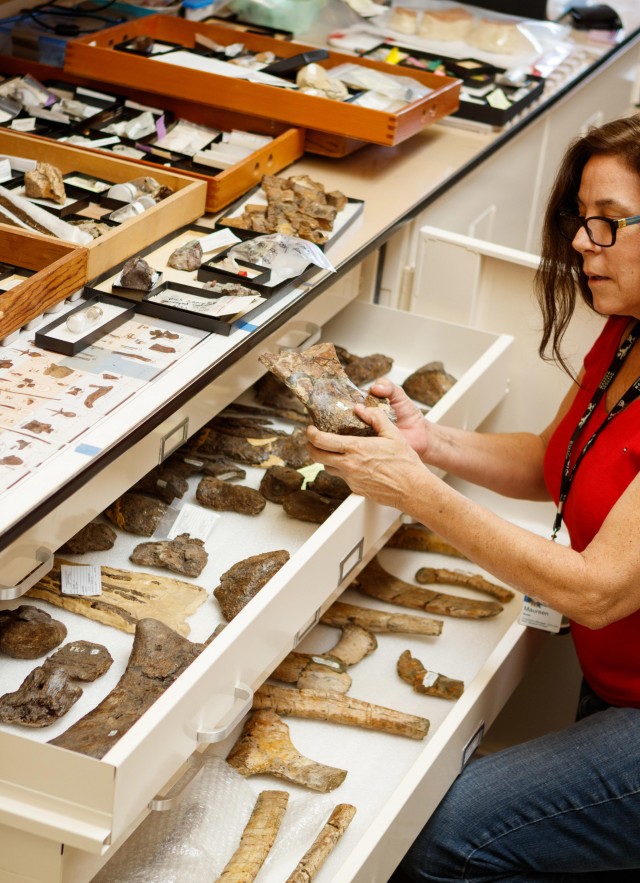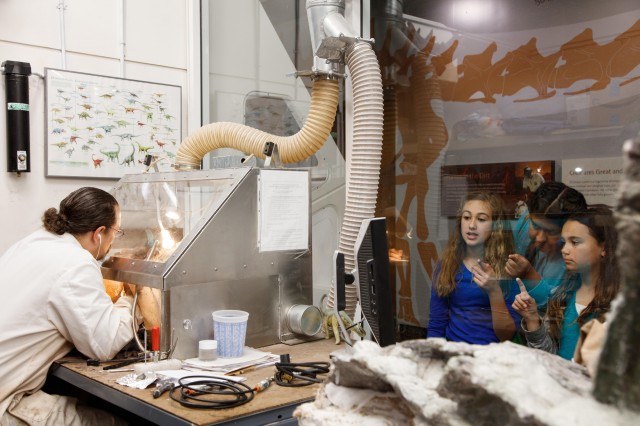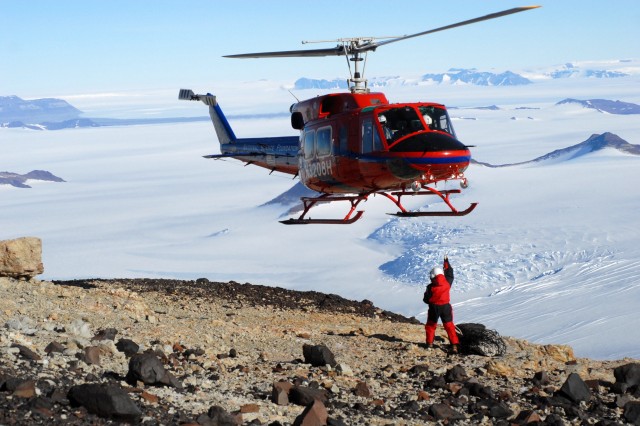Dinosaur Institute

The Dinosaur Institute (DI) houses the museum's collection of Mesozoic tetrapods (four-limbed vertebrates), dating from 250 million years ago to 65.5 million years ago. This collection includes fossils of dinosaurs spanning the Mesozoic Era, as well as fossils of other tetrapods that lived alongside the dinosaurs, such as flying and marine reptiles, crocodiles, turtles, amphibians, and early mammals.
The fossils in our collection have been acquired over nearly a century, and the collection continues to expand rapidly through the Dinosaur Institute's very active field program. The DI runs expeditions several times a year to collect fossils from sites throughout the southwest USA. We also participate in international field programs, most recently in China, Brazil, and Antarctica.
OUR RESEARCH
- Origins and early evolution of dinosaurs and their relatives
- Evolution and biogeography of early Mesozoic tetrapods from Antarctica
- Evolution of marine reptiles from the Triassic of Nevada
- Origins and evolution of birds
COLLECTIONS HIGHLIGHTS
- Triassic tetrapods from the central Transantarctic Mountains
- Triassic ichthyosaurs from the Augusta Mountains of Nevada
- Late Jurassic microvertebrates from Fruita, Colorado
- Late Cretaceous dinosaurs from across Laramidia
FIELD PROGRAMS
- Triassic–Jurassic tetrapod faunas of the central Transantarctic Mountains
- Triassic marine faunas of the Augusta Mountains of Nevada
- Late Triassic tetrapod faunas of northern New Mexico
- Late Jurassic dinosaur faunas of southeastern Utah
- Late Cretaceous avian faunas of southeastern Brazil
RESOURCEs
DINOSAUR INSTITUTE FELLOWSHIP FUND
The Dinosaur Institute Fellowship Fund supports Postdoctoral scientists and PhD students conducting paleontological research in the Dinosaur Institute. It aims to expand NHM's research, training, and outreach missions and cement our crucial role as an incubator for future museum scientists.
DINOSAUR INSTITUTE SUMMER INTERNSHIP IN FOSSIL CONSERVATION
The Dinosaur Institute Summer Internship in Fossil Conservation focuses on developing student skills and experience in vertebrate fossil conservation and museum science. It is open to undergraduate students from Howard University and the University of Chicago.
Our Staff
The DI staff provides mentorship in paleontology for a diverse group of people, from volunteers and docents to undergraduates, PhD students, and postdoctoral fellows. A wide range of research is conducted here at the museum by both staff and visiting researchers, from examining different aspects of the evolution of dinosaurs and other Mesozoic animals to investigations into their diversity, evolutionary relationships, ecology, and life history.
Clear Search
Clear
Contact Us
Questions? Contact Maureen Walsh at mwalsh@nhm.org or call 213.763.3318.
Follow us on Instagram @proyectodinosaurios.

